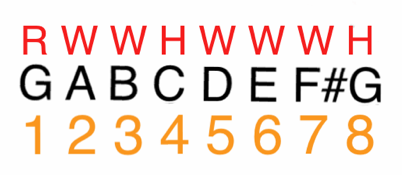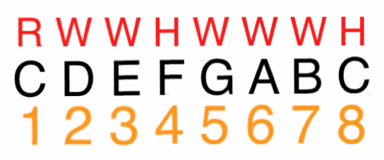The wonderful world of music scales.
Learning scales for me didn’t really happen until I entered high school. My music teacher in school did not teach me the importance of scales and patterns to create music . All I did was read sheet music, I had no true understanding of music theory and scales.
So, why scales and what’s the importance? I’ll use some analogies to explain.
Note: If your a beginner in music you may not understand this lesson.
There are 12 keys in western music and each key has a particular vibe or feeling to it. For example when you watch a suspense type movie you can tell based on the film score what’s gonna happen. You would hear that eerie suspenseful sound to it right before someone if gonna chopped to pieces.
I will use a painter in comparison to a musician for the analogies.
Musician = Painter
Instrument = Canvas
Music Keys = An painters color palette.
In each key there are a collection of musical notes in a particular sequence called scales. Here is an example.
In the key of C, there is the C major scale. The notes are:
C D E F G A B C
Pretty simple to remember right? When you play the C major scale it has a certain tonality to it that you can recognize.
Scales notes = Painters colors.
You as the musician or painter has an idea for a great composition. You can’t start a great painting or composition without figuring out the musical key or color palette. This will give the feel or mood for your creation. Check out great artists like Van Gogh, Caravaggio, Michelangelo and you will find they have a distinct choice color palette that they use which creates the mood for their masterpiece.
Musical idea = sketch
Composition = painting
Scale notes are your colors of choice that you can use to create an amazing musical idea or composition. But it’s important to know which ones you can use. Here are a few to start with:
- Major scales
- Minor scales
- Pentatonic scales
- Blues scales
- Chromatic scales
- Diminished scales
- Hexatonic scales
- Melodic Minor scales
- And way too many more…
Pick up scales 1-6 and you have covered pretty much all the scales you would ever use in today’s music world. Everything else gets you in that genius type mode. You would start using all the other scales in music like Jazz or Fusion.
Today we will cover the major scale first and see how we can construct it piece by piece. Read the legend first to start you off so you won’t get confused.
Legend:
R = Root
W = whole step
H = half step
Starting with the C major. It’s construction is separated by a series of whole steps and half steps starting with the root note “C”

The top row is your scale construction, the second row are your scale notes, and the bottom row are your scale numbers. Follow this sequence of whole steps and half steps and you’ll be able to construct the major scale in all 12 keys.
Key of G

It’s not that tough to learn. This is the science and theory of how a major scale is built from the ground up. Now it’s your turn start building your scales. We got two scales so far, now all you have left is 10 more.
Go on get crackin’.
Your, “Aha” moment will come soon enough.
Second note: Remember if your a rookie you probably won’t get this right away, you need to learn your chromatic scale first. Here, I’ll hook you up so won’t be behind.
The chromatic scale consist of all 12 notes of the musical scale, all separated by half steps only.
A A#/Bb B C C#/Db D D#/Eb E F F#/Gb G G#/Ab
There you go, all 12 notes in order separated only by half steps. Now you can take up the challenge.
Tip: two half steps equal a whole step.
Music Analogies review:
Musician = Artist
Musical idea = sketch
Instrument = canvas
Fingers = artists brush
Music keys = color palette
Music scales = artists colors
Composition = masterpiece painting
Hope you liked and understood the “Major scale mystery Unfolds” Feel free to share this post as well by clicking on one of the share buttons below. If there is something you don’t get don’t hesitate to comment below and I’ll try my best to answer your question. I will cover more music theory in the future.
Peace Bros.

